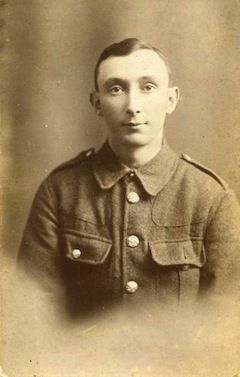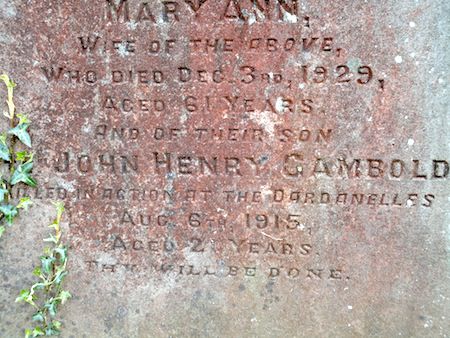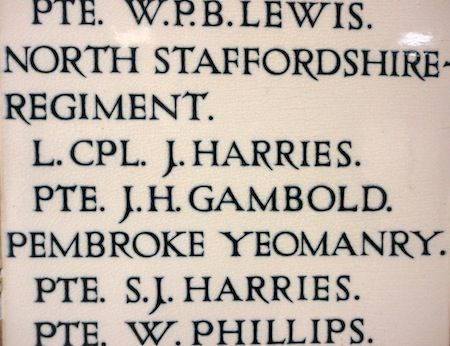Gallipoli Remembered
15th January 2016

John Henry Gambold
The loss of every life in war is a tragedy; each one has its own story that ripples out and affects huge numbers. Ever present enormous casualty statistics can sometimes inure readers to the personal elements, but when emotive documentation survives it comes home with a jolt...especially when it is someone of your own close family.
I never knew my grandfather, James Gambold; he died before I was born as a result of injuries sustained at the battle of Ypres during the First World War. And neither did I ever meet his brother, my great uncle, John Henry Gambold. He is one of those for whom memorial services and events have recently been held across the world; he was killed at the battle of Gallipoli (also called the Dardanelles) in 1915 aged 21.
The Dardanelles is a narrow strait of water that gives access from the Black Sea to the Mediterranean via the Sea of Marmara. During the 19th century, Russia’s attempts to control this important stretch of water led to the Crimean War.
Gallipoli is on a narrow peninsula to the north of the Dardanelles Strait and has become known as one of the worst disasters of WW1 during which over 50,000 men were killed on the Allied side (and about the same on the Turkish side), over 100,000 were wounded and many tens of thousands more died of disease.
It lasted from April 1915 to January 1916 and had been initially planned by Winston Churchill (First Lord of The Admiralty at the time) as an attempt to unsettle the Germans on the Western Front by attacking their weaker (as thought) ally in the eastern Mediterranean. The Turks proved to be far from weak and from the start of the campaign inflicted massive losses on both the army and navy of the Allied forces.
John Henry Gambold was born on the 14th November 1894, the son of John and Mary Gambold of Colby Scott, Prendergast. Although he enlisted (in August 1914) into the Welsh Regiment, he was transferred into the 7th Battalion of the North Staffordshire Regiment. (It was commonplace at the time to take men from regiments that were experiencing bigger enlistment success than was needed and place them elsewhere).
The 7th Battalion became part of the Western Division which landed at Anzac Cove between the 3rd and 5th August 1915. On the 6th the battle of Sari Bair was launched and on that first day, John Henry was killed during an artillery bombardment. The letter from his commanding officer survives and reads as follows;
7 N. Staff. Regiment.,
39th Infantry Brigade,
British Mediterranean Expeditionary Force.
Dear Mrs Gambold, - I sincerely regret to have to let you know that you son was killed this morning during an artillery bombardment. As his platoon and company commander, by his death I have lost one who will be greatly missed by myself and by his comrades. He was always a really good soldier and will always be remembered by both the officers and men of the company. I hope you will accept my sympathy in your bereavement and that though we have not met this will be a little comfort to you.
Yours sincerely,
D.C.B. Cotes’
A short time after the war had ended, his mother, my great grandmother asked for the following, extremely emotive poem, to be published in the Western Telegraph;
In loving memory of my dear son, Pte John Henry Gambold, who fell in action at the Dardanelles, August 6th, 1915, aged 21 years.
He bid no one a last farewell, he said goodbye to none.
His spirit flew before we knew that from us he had gone.
We often think of you, dear John, and think of how you died,
To think we could not say goodbye before you closed your eyes.
Inserted by his loving mother, sister, and brothers.

This gravestone in Prendergast cemetery carries the names of his parents and as no grave exists for him, his name was added.
John Henry has no grave but his name was inserted on his parent’s gravestone and can be seen in Prendergast cemetery. His name also appears on the memorial plaque in Withybush hospital and is on the Helles Memorial in Gallipoli. Much of the research for this article was undertaken by my cousin Megan Roberts who is resident in Lancashire.

This is the memorial in the corridor of Withybush hospital.